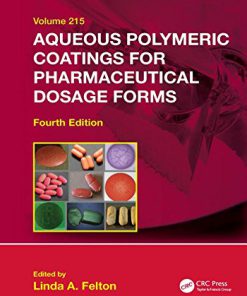The Aqueous Chemistry of Oxides 1st edition by Bruce Bunker, William Casey 9780199384266 0199384266
$50.00 Original price was: $50.00.$25.00Current price is: $25.00.
The Aqueous Chemistry of Oxides 1st edition by Bruce Bunker, William Casey – Ebook PDF Instant Download/Delivery: 9780199384266, 0199384266
Full download The Aqueous Chemistry of Oxides 1st edition after payment

Product details:
• ISBN 10:0199384266
• ISBN 13:9780199384266
• Author:Bruce Bunker, William Casey
The Aqueous Chemistry of Oxides
The Aqueous Chemistry of Oxides is a single-volume text that encapsulates all of the critical issues associated with how oxide materials interact with aqueous solutions. It serves as a central reference for academics working with oxides in the contexts of geology, various types of inorganic chemistry, and materials science. The text also has utility for professionals working with industrial applications in which oxides are either prepared or must perform in aqueous environments.The volume is organized into five key sections. Part One features two introductory chapters, intended to introduce the mutual interests of engineers, chemists, geologists, and industrial scientists in the physical and chemical properties of oxide materials. Part Two provides the essential and fundamental principles that are critical to understanding most of the major reactions between water and oxides. Part Three deals with the synthesis of oxide materials in aqueous media. Part Four deals with oxide-water reactions and their environmental and technological impacts, and Part Five is devoted to other types of relevant reactions. The Aqueous Chemistry of Oxides is the first book that provides a comprehensive summary of all of the critical reactions between oxides and water in a single volume. As such, it ties together a wide range of existing books and literature into a central location that provides a key reference for understanding and accessing a broad range of more specialized topics. The book contain over 300 figures and tables.
The Aqueous Chemistry of Oxides 1st Table of contents:
PART ONE An Introduction to Oxides
1. The Importance of Oxides and Oxide–Water Reactions
1.1. Geochemical Importance
1.2. The Technological Importance of Oxides
1.3. The Physical Properties of Oxides
1.4. The Chemical Properties of Oxides
1.5. The Aqueous Chemistry of Oxides: A Road Map
2. An Overview of Oxide Structures and Compositions
2.1. Local Oxide Structures: The Oxide (O2−) Anion
2.2. Predicting Oxygen-Bonding Configurations: An Introduction to the Formal-Charge Model
2.3. Close-Packed Crystalline Lattices
2.4. Oxides Containing Octahedral Cations
2.5. Oxides Containing Tetrahedral Cations
2.6. Oxides Containing Both Octahedral and Tetrahedral Cations
2.7. Engineered Oxide Nanostructures
PART TWO Fundamental Oxide Reactions in Aqueous Solutions
3. The Structure and Properties of Water
4. Solvated Ions in Water
4.1. Introduction
4.2. Solvated Anions
4.3. Solvated Cations
4.4. The Structure of Solvated Cations
4.5. The Acid–Base Properties of the First Solvation Shell
4.6. Using Formal Charge Models to Predict and Rationalize pKa Values
4.7. An Introduction to Ligand-Exchange Reactions
4.8. The Thermodynamics of Ligand Exchange
4.9. The Kinetics of Ligand-Exchange Reactions
5. The Hydrolysis Products: Soluble Multi-cation Clusters
5.1. Introduction
5.2. Structures of the Hydrolysis Products
5.3. The Occurrence of Hydrolysis Products: Reading Hydrolysis Diagrams
5.4. Trends in Cation Hydrolysis
5.5. Hydrolysis Diagrams as Predictors of Oxide Chemistry
5.6. Speciation Diagrams Involving Foreign Ligands
5.7. The Acid–Base Chemistry of Multi-Cation Hydrolysis Products
5.8. Mechanisms for Reversible Condensation Reactions
5.9. Hydrolysis Product Stability: Dimer Reaction Pathways
5.10. The Stability of Larger Hydrolysis Products
5.11. The Polyoxometalates: Covalent Oxide Clusters
6. The Chemistry of Extended Oxide Surfaces
6.1. Introduction
6.2. Ideal Oxide Surfaces in the Absence of Water
6.3. Interactions between Pristine Surfaces and Water Molecules
6.4. The Interface between Liquid Water and Oxide Surfaces
6.5. Acid–Base Reactions on Oxide Surfaces in Liquid Water
6.6. Ligand-Exchange Reactions Involving Water: Oxide Dissolution
6.7. Reactions Involving Foreign Ligands
PART THREE The Aqueous Synthesis and Processing of Oxides
7. Nucleation and Growth of Solid Oxide and Hydroxide Phases
7.1. Introduction
7.2. Classic Nucleation Theory
7.3. Chemical Control of Oxide Nucleation
7.4. Classic Growth Theory
8. The Colloidal Chemistry of Oxides
8.1. Introduction
8.2. Fundamental Colloidal Interactions
8.3. The Chemical Origin of Surface Charge
8.4. The Impact of Aggregation on the Properties of Colloidal Slurries
8.5. Ceramic Processing: The Role of Organic Additives
9. Bio-inspired Synthesis of Oxide Nanostructures
9.1. Introduction
9.2. Hierarchical Self-Assembly: From Molecules to Template Architectures
9.3. Template Functionalization: The Role of Self-Assembled Monolayers
9.4. Controlling Supersaturation Levels: Complexation and Compartmentalization
9.5. Nucleation Promoters and Inhibitors: Catalytic and Epitaxial Manipulations
9.6. Mediation of Crystal Growth: The Role of Site Blockers
9.7. Active Assembly Using Microtubules and Motor Proteins
PART FOUR Technologically Important Oxide Reactions
10. The Ion Exchange Behavior of Oxides
10.1. Introduction
10.2. Ion Exchange Capacity: The Role of Potential-Determining Ions
10.3. Ion Exchange Equilibria: The Importance of Selectivity
10.4. The Role of Local Charge Distributions in Optimizing Ion-Exchange Selectivity
10.5. The Roles of Steric Effects and Selective Solvation on Ion-Exchange Selectivity
10.6. Sodium Titanates for 90Sr2+ Remediation
10.7. Silicotitanate Ion Exchangers for Cs+ Remediation
10.8. Interactions between Cs+ and Clay Minerals
10.9. Oxide Anion Exchangers
10.10. Lithium Extractions Using Oxide Ion Exchangers
10.11. Nanomaterials Formed Via Ion Exchange: The Pillared Clays
10.12. Oxides as Ion and Proton Conductors
11. The Electrochemistry of Oxides
11.1. Introduction
11.2. Electrochemical Reactions
11.3. Pourbaix Diagrams
11.4. The Electrochemistry of Water
11.5. Pourbaix Diagrams Involving Solid Oxides
11.6. The Kinetics and Mechanisms of Electron Transfer Reactions
11.7. The Impact of Electrochemistry on Oxide Reactions and Stability
11.8. Electrochemical Energy Storage Devices Containing Oxides
11.9. Oxides in Primary Batteries
11.10. Oxides in Secondary Batteries
11.11. The Lead–Acid Battery
11.12. Ultracapacitors: Nanostructured Oxides for Energy Storage
11.13. Environmental Electrochemistry
12. Oxide Films in Metal Corrosion: Oxide Defect Chemistry
12.1. Introduction
12.2. The Electrochemistry of Metal Corrosion
12.3. Galvanic Corrosion
12.4. The Kinetics of Metal Corrosion
12.5. Oxide Phases in Metal Corrosion
12.6. The Defect Chemistry of Oxides
12.7. Corrosion Kinetics Versus Defect Migration Rates
12.8. The Role of Hydration in Corrosion Rates and Mechanisms
13. Photochemistry and Excited-State Reactions of Oxides
13.1. Introduction
13.2. Light and Other Sources of Oxide Excitation
13.3. Light Absorption by Soluble Oxide Complexes
13.4. The Electronic Structures of Oxides
13.5. Band Bending: The Role of Surface Charge
13.6. PhotoInduced Electrochemistry
13.7. The Role of Photosensitizers: The Grätzel Cell
13.8. High-Energy Reactions: Electron- and Photon-Stimulated Processes
13.9. Damage in Oxides Resulting from High-Energy Radiation
PART FIVE Reactions Involving Tetrahedral Oxides
14. Aqueous Polymerization of Silicates and Aluminosilicates
14.1. Introduction
14.2. Soluble Silicate Polymers
14.3. Silicate Polymerization Mechanisms and Reaction Kinetics
14.4. Sol–Gel Processing of Silicate Materials
14.5. The Importance of Aluminosilicate Polymerization
14.6. The Chemistry of Monomeric Al(III) Complexes
14.7. Mechanistic Considerations Regarding Aluminosilicate Clusters
14.8. Aluminosilicate Polymerization in Basic Solutions: Experimental Results
14.9. Aluminosilicate Polymerization in Weak Acids: The Formation of Imogolite Clays
14.10. Hydrothermal Synthesis of Silicates and Aluminosilicates
15. Glass Dissolution and Leaching
15.1. Introduction
15.2. Glass Structure and Dissolution Mechanisms
15.3. Silica Dissolution
15.4. Alkali Silicate Glasses
15.5. Borate Glasses
15.6. Borosilicate and Aluminosilicate Glasses
15.7. Phosphate Glasses
15.8. Nuclear-Waste Glasses
16. Stress Corrosion Cracking: Chemically Activated Nanomechanics
16.1. Introduction
16.2. Macroscopic Brittle Fracture Models
16.3. Molecular Modeling of Strain-Enhanced Reactivity
16.4. Reactions between Water and Strained Model Compounds
16.5. Molecular Requirements for Stress Corrosion
16.6. The Role of Water in Complex Crack-Growth Behaviors
PART SIX The Environmental Geochemistry of Oxides
17. The Weathering of Oxides
17.1. Introduction
17.2. Physical Weathering
17.3. Chemical Weathering: The Hydrolysis of Oxides
17.4. A Conceptual Framework for Oxide Weathering: The Weathering of Granite
17.5. The Genesis of Sandstone from Quartz: The Role of Structure in Mineral Dissolution
17.6. The Genesis of Clay Minerals from Feldspars: Hydrolytic Transformations
17.7. The Genesis of the Iron and Manganese Oxides: Redox Cycling in Weathering
17.8. The Genesis of Precipitates: Carbonate Chemistry and Limestone Formation
18. The Impact of Oxides on Environmental Chemistry
18.1. Introduction
18.2. Wind: Oxide Chemistry in the Atmosphere
18.3. Earth: Oxide Chemistry in Soil
18.4. Water: Oxides in the Hydrosphere
18.5. Fire: Oxides and Water in Geothermal Environments
Subject Index
Substance Index
People also search for The Aqueous Chemistry of Oxides 1st:
the aqueous chemistry of oxides first edition
the oxides of group 2a metals
the oxides combine with water in the atmosphere
oxides formed by rb
the acidic nature of an oxide of phosphorus
You may also like…
Chemistry - Biochemistry
Biography & Autobiography - Historical
Young Benjamin Franklin the Birth of Ingenuity First Edition Nick Bunker
Computers - Programming
History - Military History












